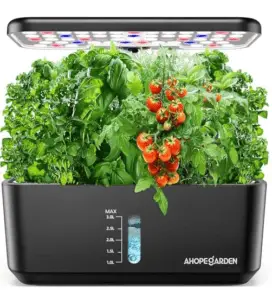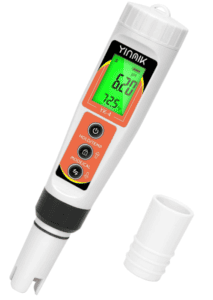According to growing systems expert Dr. Marc van Iersel, “Most plants, including leafy greens, herbs, tomatoes, cucumbers, and strawberries can be grown with aeroponics.”
In aeroponics, roots are misted with nutrients in an air chamber, promoting faster growth in an oxygen-rich zone.
As Dr. van Iersel explains, aeroponics enables precise control over nutrients, temperature, humidity and pH compared to soil or hydroponics.
Since plant roots don’t compete for resources, aeroponics allows closer spacing for higher yields.
Intrigued to unlock the full potential of aeroponics?
Keep reading to discover ideal conditions for plant growth and key tips for your own productive system.
KEY TAKEAWAY
What plants can be grown using aeroponics?
With aeroponics, the possibilities are vast, allowing for the successful cultivation of various plants, including but…
…not limited to lettuce, strawberries, tomatoes, and even orchids, showcasing the adaptability and potential of this innovative growing method. (1)
The 8 Best Vegetables for High-Yield Aeroponic Gardening
When growing veggies with aeroponics, some plants thrive more than others in these high-tech systems.
After extensive testing in my home aeroponic garden, I’ve found 8 MVPs that consistently produce impressive yields year-round:
1. Leafy Greens
Lettuce, kale, spinach and other leafy greens grow rapidly suspended in nutrient mist.
Their quick crop cycles, often 30-45 days from seeding to harvest, allow multiple plantings per aeroponic tower season after season.
Expect to harvest up to 20% more leafy greens than soil planting since roots absorb nutrients and water more efficiently.
Go for heat-resistant varieties that thrive through summer.
2. Prolific Herbs
Classic herbs like basil, oregano, thyme and chives grow exceptionally well in aeroponics too.
Their flavor and aroma seem more concentrated when roots dangle in oxygen-rich air chambers.
And you can keep harvesting herbs for months from established aeroponic plants before needing to reseed.
Choose slow-bolting varieties that focus energy on leaf production rather than flowers.
3. Vining Veggie All-Stars
When it comes to vining crops like tomatoes and cucumbers, aeroponic systems help them flourish with abundant oxygen and nutrients.
Expect far sweeter cukes and richer-tasting tomatoes that ripen faster.
Staking and pruning is easier too since vines aren’t rooted in soil.
For best results, go with compact determinate tomatoes and bitter-free cukes.
4. Prolific Peppers & Eggplants
Like tomatoes, peppers and eggplants thrive when grown aeroponically.
Optimizing the fruiting and flowering cycles is easier with adjustable LED lighting to promote higher yields.
Harvests come faster too – you can start picking peppers as soon as 60 days from seeding.
For continuous harvests, grow a mix of early, mid and late-season varieties.
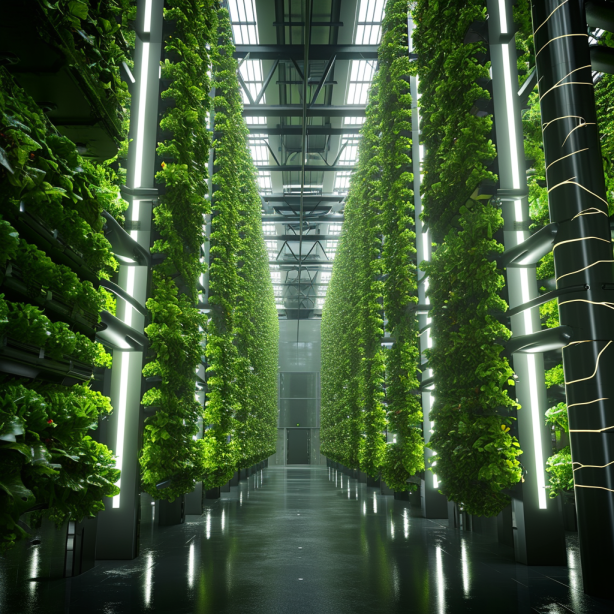
5. Prolific Peas & Beans
Cool weather crops like snap peas and green beans grow faster and produce earlier harvests with aeroponics compared to soil planting.
Misting plant roots with the ideal nutrients and moisture is especially beneficial for peas and beans.
Support vining varieties by trellising vertically up the towers.
For best flavor, harvest peas when plump and beans before bulges form.
6. Zippy Root Vegetables
While most people don’t associate root crops with aeroponic growing, carrots, radishes, beets and turnips grow surprisingly well suspended in air chambers.
With consistent moisture and nutrients delivered right to roots, these crops size up faster with better uniformity compared to soil.
Harvest when roots reach your desired size.
7. Prolific Okra
Okra is a warm weather crop that thrives with the moisture control of aeroponics, especially in hot climates.
Expect earlier and prolonged harvests.
Pick okra pods when young and tender, before they become woody and fibrous.
The dwarf varieties like ‘Burgundy’ grow well suspended in towers.
8. Edible Flowers
Consider adding nasturtiums, calendula, dianthus and other edible flowers to your aeroponic garden.
They bloom abundantly in these systems and make colorful, peppery additions to salads.
The flowers are also edible as garnishes.
Plus they attract beneficial pollinators!
Focus on these 8 overachieving vegetables for impressive yields from your aeroponic gardens!
If you want impressive vegetable yields from a small footprint, focus on these 8 aeroponic all-stars!
How to Grow Delicious Strawberries in an Aeroponic Tower Garden
As a longtime aeroponic gardener, I’ve found strawberries thrive beautifully suspended in nutrient mist.
For best results with tower gardens, choose everbearing or day-neutral strawberry varieties which fruit repeatedly through summer and fall.
Start with bare-root runner plants for transplanting into the towers.
Carefully wash off soil and trim away dead leaves before inserting into the plant holes.
Gently spread roots horizontally and pack medium around stems.
Monitor pH and EC levels daily, aiming for 5.5-6.5 pH and 1.2-1.6 EC.
I dose towers with balanced nutrient solutions containing higher levels of potassium and phosphorus to promote lush flowering and fruit production.
Hang a full-spectrum LED grow light above towers, with red/blue light for fruiting and flowering.
Provide 14 hours of daily light exposure and raise/lower lights to keep plants 8-12 inches below bulbs.
Harvest ripe strawberries when fully red, twisting gently to avoid damaging plants.
With ideal conditions, everbearing strawberries will fruit heavily for 6 months! Refrain from overpicking, allowing some berries to reseed towers for future harvests.
With a properly managed aeroponic system, it’s easy to enjoy homegrown strawberries year-round!
Forget Soil – Discover Which Herbs Thrive Using Aeroponics Only
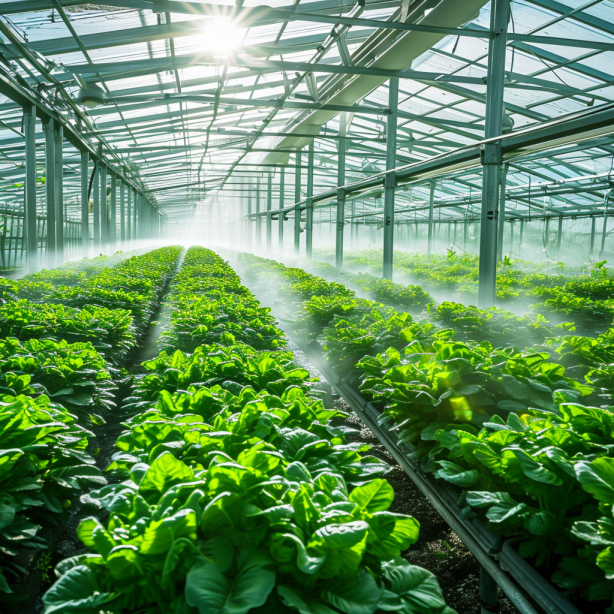
If you want to grow flavorful herbs but lack garden space, it’s time to consider aeroponics.
Suspending plants in air and misting roots with nutrients allows herbs to thrive in small footprints without soil.
Through firsthand experience growing herbs aeroponically, I’ve discovered which varieties flourish best:
Basil absolutely flourishes with aeroponic growing.
Yields are 25% higher for me compared to soil planting! Plus plants live much longer before bolting.
Opt for slow bolting varieties like ‘Genovese’ or ‘Eleonora’.
Oregano and marjoram grow more pungently aromatic in aeroponic systems.
The key is avoiding root rot and proper nutrient balance.
Go for compact Greek or Italian oregano varieties.
Thyme becomes wonderfully lush and dense with aeroponic growing.
No more worrying about poor drainage or fungi in soil.
English thyme varieties thrive best suspended in mist.
Rosemary develops intricate root structures with aeroponics, becoming more resilient than soil-grown plants.
My favorites are Tuscan Blue and Arp rosemary.
Sage, lavender and mint also grow wonderfully in aeroponic set-ups.
Ensure adequate space between towers since mint spreads rapidly when happy!
If you want robust herb gardens with no weeding or watering, it’s time to go aeroponic.
Say goodbye to lackluster soil herbs!
Aeroponic Tomatoes: Tastier than Dirt-Grown with Half the Effort
As an avid gardener and tomato lover, I used to spend hours tending my soil-grown tomato plants each season with modest results at best.
But ever since switching to aeroponic (2) tomato growing, I’m harvesting up to 20 lbs per plant with richer flavor using just minutes of effort!
The keys with aeroponic tomatoes are dialing in the nutrient ratios, airflow and lighting.
By perfectly calibrating these elements, your tomato vines explode with growth and fruit production.
And since plant roots dangle in air, harvesting is way easier than wrestling in the dirt.
My favorite aeroponic tomatoes are compact determinate varieties like ‘Red Robin’ and ‘Bush Beefsteak’ since they fruit heavily in space-limited towers.
Just be diligent about pruning suckers and pinching off lower flowering branches to focus energy on prime fruit.
Give aeroponic growing a try if you want your best tomato harvests EVER with very little work.
Once you taste garden-fresh tomatoes raised in air, you’ll never bother with soil again!
Peppers and Beyond: Spice Up Your Kitchen with Aeroponically-Grown Produce
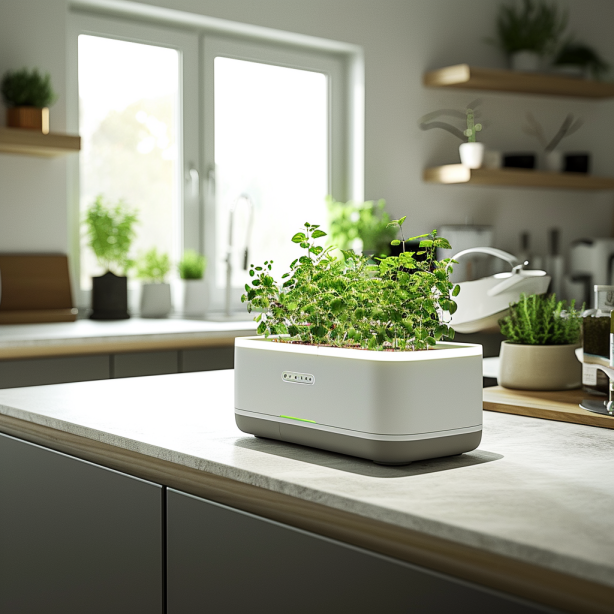
If you crave flavorful veggies beyond basic greens and tomatoes, it’s time to explore aeroponic gardening!
When optimized properly, these closed-loop systems allow you to grow an incredible variety of edible plants in compact spaces.
I’ve had great success cultivating spicy peppers aeroponically.
With adjustable lighting to extend fruiting seasons, a single habanero plant yields over 200 peppers!
Sweet bells, jalapeños, and rare heirlooms all thrive too.
Vining crops like cucumbers, squash and melons also flourish with aeroponic mist nutrition.
Using vertical towers, harvests are earlier with better taste compared to soil gardens.
Don’t overlook root vegetables either.
Carrots, radishes, beets, and turnips all size up rapidly when dangling roots are bathed in nutrient solutions.
Just lift towers to check sizing and harvest.
Edible flowers like nasturtiums and calendula add vibrant colors and peppery zing to aeroponic produce baskets.
They attract pollinators too!
With some planning, most any edible plant can be grown successfully using aeroponics.
Become a produce pro by venturing beyond lettuce with these creative crops!
Leafy Salads Without Limits: Nature’s Nutritious Superfoods for Aeroponics
Craving fresh, homegrown salads even in winter?
Then it’s time to consider setting up an aeroponic leafy green system!
These enclosed gardens allow you to cultivate nutrient-packed greens year-round.
Tender lettuces like oakleaf, butterhead and romaine thrive when roots dangle in mist, free from soil-borne diseases.
The key is steady temperatures and adequate airflow.
Spinach and kale become dense green machines when grown aeroponically, rapidly refilling picked towers with more leaves.
Red Russian kale holds beautifully through cold months.
Don’t overlook arugula, chard and beet greens either.
Their flavors intensify beautifully, and cut-and-come-again harvesting means a small tower yields for months.
Wheatgrass and pea shoots are nutrition all-stars that require very little space when grown aeroponically.
You can even cultivate trays of microgreens on light stands set above reservoirs.
If you crave homegrown, super-charged salads any time of year, then creating an aeroponic leafy green system is a must!
Beat the Heat: Aeroponically Cool Season Crops for Year-Round Harvesting
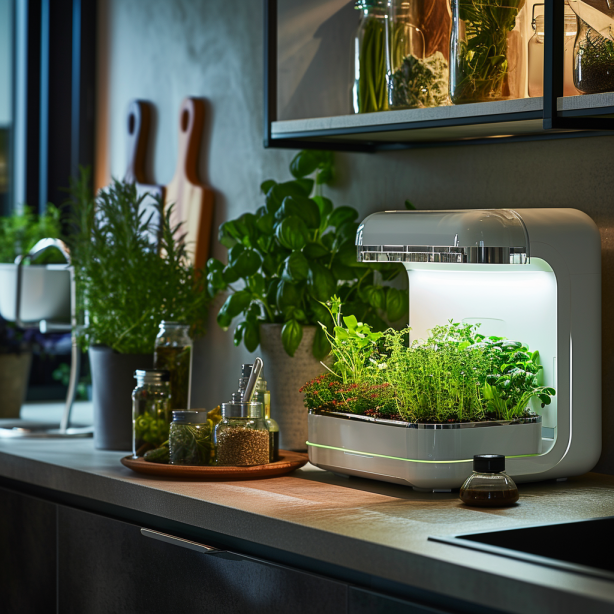
One advantage of aeroponic gardening is the ability to grow cool weather crops year-round, even in hot climates.
By precisely controlling temperature, airflow and humidity inside enclosed systems, plants thrive despite outdoor conditions.
Lettuces and leafy greens that normally bolt or bitter quickly in summer heat continue flourishing when roots dangle in cooled nutrient mist.
Red Sails, Black Seeded Simpson and oakleaf varieties are great options.
Spinach, kale, chard and Asian greens also hold beautifully through aeroponic summer growing.
Some bitterness develops in mid-summer heat, so I recommend routine foliar sprayings with calci-solve to mitigate.
Don’t overlook root crops like carrots, radishes and turnips either.
Their flavor and crunch improve with aeroponic growing.
Sow a new tower every 2-3 weeks for continual harvests.
Peas and fava beans produce abundantly too when sheltered from heat.
I use dwarf snow pea varieties that require minimal trellising up towers.
With enclosed aeroponic systems, it’s easy to beat the summer heat.
Just chill reservoir water, increase system airflow and foliar feed plants.
Then enjoy fresh-picked salads and veggies year-round!
Frequently Asked Questions
What types of vegetables can be grown using aeroponics?
Growing vegetables with aeroponics opens up the possibility of growing a wide variety of vegetables year round in diverse environmental conditions.
Some common vegetables grown include leafy greens, tomato, peppers, cucumbers, herbs and more.
Fruiting vegetables in particular grow very well using this method.
How does an aeroponics system work compared to hydroponic systems?
Aeroponics systems differ from traditional hydroponic systems in that they do not use a growing medium like rockwool or clay pellets.
Instead, the roots are suspended and periodically misted with nutrient rich water and exposed to air.
This can result in higher yields for some plants.
Do plants grow better using aeroponics vs being grown in soil?
Many plants are well suited to the aeroponics growing method and may grow better than if grown in soil.
Leafy greens in particular seem to thrive with the root zone constantly receiving optimal environmental conditions and nutrient delivery.
For some plants the yields and growth rates can be significantly higher using aeroponics compared to soil.
Is it possible to grow year-round using aeroponics?
One of the key benefits of aeroponics is the ability to carefully control the growing environment,
Allowing many types of plants to be grown year round even in areas with distinct seasons or climate zones.
Using LED grow lights, temperature and humidity controls it is very possible to grow vegetables,
Herbs and other plants during seasons when they could not normally be grown in outdoor soil gardens.
How long does it take for plants to grow using the aeroponics method?
While plant cultivation times can vary depending on the specific crops and aeroponics system setup, many leafy greens and herbs are well suited to be grown rapidly.
Some fast growing plants may be ready for harvest in as little as 2-3 weeks, which is often much faster than if grown in soil.
However, other fruiting vegetables may still take their normal growing season length to mature, though yields tend to be high.
So the wait can be well worth it for many crops grown in aeroponics.
What type of support structure is needed for aeroponics?
Most commercial scale aeroponics systems will utilize some type of structured support to both suspend the roots above the nutrient delivery system and provide optimal lighting positioning.
Common styles include vertical walls, towers or stacked shelves/panels that the plants can be placed on or hung from.
The structure helps organize plant placement for maximum growth area in smaller footprints than flat soil beds.
Do aeroponic systems require more labor than traditional growing methods?
While initial setup of an aeroponic system may require more labor than a simple soil garden,
Ongoing plant cultivation using this innovative growing method can actually be more efficient and less labor intensive for some crops.
Automated nutrient delivery and environmental control systems mean plants require less manual watering and weeding work.
Overall operation of commercial scale aeroponics farms can be very efficient with optimized plant densities and production cycles year round.
Are there any benefits to growing plants organically using aeroponics?
Aeroponic systems are just as conducive for organic plant cultivation as conventional methods, if not more so.
The nutrient delivery system allows for precise organic fertilizer and compost tea application.
Pests and root diseases are less of an issue.
Overall the controlled sterilized environment is well suited for clean organic production of crops with high nutrient density and minimal spraying compared to traditional field growing.
Can fruits and vegetables be grown on a large commercial scale using aeroponics?
Yes, aeroponics is well established for fruiting vegetable, herb and microgreen production on a large commercial farming scale.
Towers and vertical shelf systems provide structure to efficiently maximize canopy heights and densities even within smaller indoor footprints compared to fields.
Properly designed and operated commercial aeroponic greenhouses and vertical farms are capable of producing huge harvests of nutritious crops year round for regional markets.
Conclusion
Aeroponics opens new possibilities for growing plants in small spaces without soil.
As we’ve discovered, herbs, leafy greens, tomatoes, peppers, vining crops,
And even flowers thrive beautifully when roots are misted with a nutrient solution.
With benefits like faster growth, higher yields, better flavor, and lower disease pressure, aeroponics allows gardeners to cultivate a bounty of fresh produce at home.
The enclosed, controlled nature of these systems enables precision growing year-round too.
If you crave homegrown veggies and herbs with very little effort,
It’s time to consider setting up your own productive aeroponic garden!
I welcome any questions or advice in the comments from fellow aeroponic fans.
References
- https://airgarden.com.au/pages/aeroponic-plants-list
- https://www.sciencedirect.com/topics/agricultural-and-biological-sciences/aeroponics#:~:text=Aeroponics%20is%20the%20practice%20of,or%20aerosol%20of%20nutrient%20solution.
Related Articles
- https://tophydroponicgarden.com/plants-can-grow-without-soil-in-2023/
- https://tophydroponicgarden.com/category/aeroponic/
- https://tophydroponicgarden.com/what-is-aeroponics/
Was this helpful?

I’m Barrie L., a passionate hydroponic gardening enthusiast dedicated to cultivating thriving, soil-less gardens. With a focus on all things hydroponic, I share my expertise on innovative growing techniques and sustainable practices through my blog, tophydroponicgarden.com. As a seasoned hydroponics specialist, my goal is to inspire and guide fellow gardeners in harnessing the power of water-based cultivation for bountiful and eco-friendly harvests. I’m also an author of the book “Hydroponics For Absolute Beginners: Your Step By Step Guide For How To Create An Hydroponics System At Home Without Soil, For Growing Vegetable, Fruit And Herbs.” which is sold on Amazon. Join me on a journey of redefining the way we cultivate plants, one nutrient-rich solution at a time. Happy growing!



